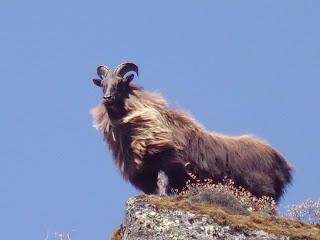Total Area : 1500 sq km.
Buffer Zone : 830 sq km.
Activities : Trekking, Mountaineering
Accommodation : Resort hotels, Lodges, Camping
Access : Fly to Tumlingtar from kathmandu (40 minutes and six days walk)
Best Season : Oct-Nov and Mar-April
Apr-May (hot at lower elevations)
Jun-Sep (monsoon)
Prak Headquarter : Seduwa, Sankhuwasava
Contact : 029-560136
Buffer Zone : 830 sq km.
Activities : Trekking, Mountaineering
Accommodation : Resort hotels, Lodges, Camping
Access : Fly to Tumlingtar from kathmandu (40 minutes and six days walk)
Best Season : Oct-Nov and Mar-April
Apr-May (hot at lower elevations)
Jun-Sep (monsoon)
Prak Headquarter : Seduwa, Sankhuwasava
Contact : 029-560136
The park spreads over the districts of Sankhuwasava and Solukhumbu in the northeast Nepal. One of the prime attraction for visitors to the park is to experiance the unique Himalayan bio-diversity. The vegetation rangees from sub tropical froests to sub alpine and alpine as altitude increases. The park boasts of 48 spices of orchids, 87 spices of medical herbs, 25 of Nepal's 30 varieties of rhododendron, 19 bamboo spices, 15 oak spicies, 48 spicies of primerose and 86 spices of fodder trees. The park also offers bird watching oppertunities with its 400 spicies of birds, including the rare spotted wren babbler and olive ground warbler. Wild life include the indangered red panda, snow leopard, Himalayan black bear, clouded leopard, ghoral, thar, wild boar, barking deer, Himalayan marmot, weasel, langur monkey and serow. Arun river that flows through the park has 84 varieties of fish including salmon.












